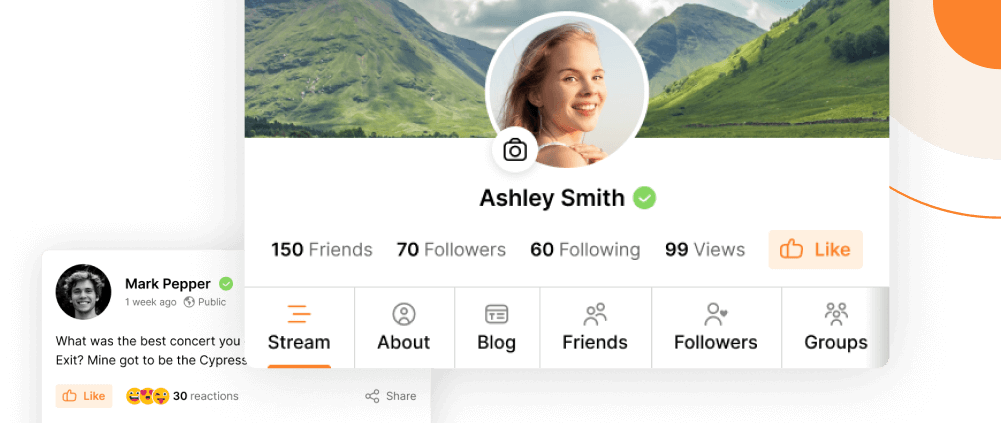If you can establish some momentum with getting new members in, make them comfortable and engaged with the community (i.e. onboarding them), you’re setting yourself up for success—but more than a few community managers underutilize or ignore this process.
They might send a welcome email or simply depend on other members / the quality of discussions to keep people coming back. This isn’t how it works.
Onboarding is crucial for helping new members:
- Understand how to conduct themselves within the community
- Learn the community guidelines
- See which resources and tools will help them make the most of the community
- Discover peers with similar interests and personalities, leading to new networks and relationships
It also gives the community manager ample time to emphasize the full value of the community, encouraging them to keep coming back.
So what can you do to integrate new members into your community more easily, and more effectively?
Take new members on a ‘guided tour’
It’s what you’d do for new members to a physical community, right? These ‘tours’ are often done through text, though we personally recommend a video: it’s easier to digest, re-watch, and enjoy than a lengthy blog post.
Coming from the community manager (perhaps with input from fellow members) it also feels much more personal. You then give members a space to ask questions, find their feet, and introduce themselves to the platform.
A traditional email sequence
The most common ‘onboarding’ is probably the massive, no-one-will-remember-it-all email containing everything you need to know about the community. A sequence allows you to introduce new concepts gradually, making it very digestible.
Depending on community size, lots of incredible email automation platforms offer free memberships which are super easy to use. Try to use a tone that fits with your community; no need to aim for ‘corporate’ or stuffy email speak!
Understand what your new members really need
The initial, most practical topics are easy to see:
- How do I login?
- How do I start a discussion?
- How do I navigate the community?
- How do I search for resources/tools?
- How do I stop your annoying onboarding email sequence???
You might also consider asking established members what would’ve been most valuable to them when they joined, and use this to help guide your content. The answers might surprise you!
Maybe you’ll discover that even though it’s a super jokey and fun community, this doesn’t come across at all during onboarding. Or that while existing members understand your gamification system, it’s not easy to follow when you first join.
Acting on these simple insights can drastically improve retention rates from onboarding.
“Introduce yourself” discussion threads?
These are a non-negotiable, de facto standard for many communities. It’s often a mandatory requirement before gaining access to the wider community. These can be useful for filtering out spammers, trolls, and bad fits, but otherwise they aren’t actually great for creating engagement.
For a start, most long-term members become totally jaded with these questions. But the big problem is that everyone else who reads the post probably thinks….”Well, who cares?”
Here’s a better approach.
Instead of ‘introduce yourself’, ask a purposeful question that has a chance of inciting a discussion!
- What’s your biggest pet peeve when it comes to [industry/niche]?
- What advice would you give to a complete newbie in [industry/niche]?
- What are you trying to achieve by joining this community?
The answers will either be polarising or they’ll resonate with existing members, and at the very least you should get a small amount of discourse. At best, you’ll get detailed and compelling discussions right off the bat. Nothing is better for new member retention than this kind of discussion, on something they actually care about.
So those are a few ideas. The point is to remember that onboarding is crucial and also nuanced—you can’t just throw out some information and cross your fingers. Be as targeted and personal as you can, and hopefully your new members will stick around for a very long time!
And if you’re already knee-deep in onboarding strategies and aren’t sure what to do next, or how to optimize, then this post is the one for you.


Reactions & comments
Comments